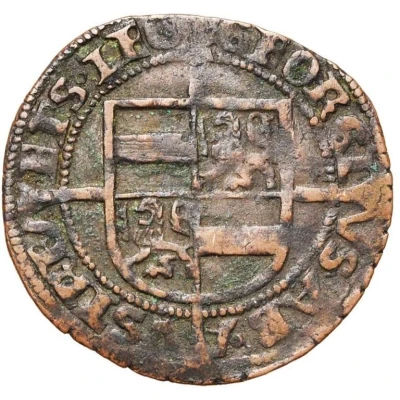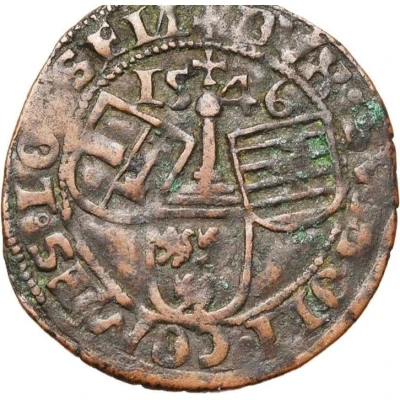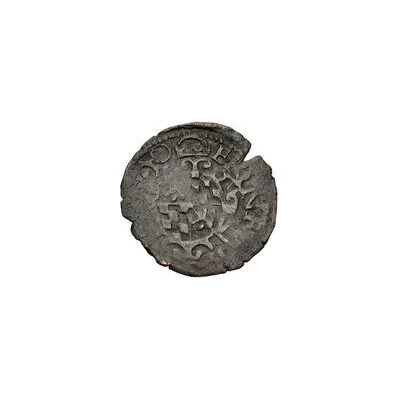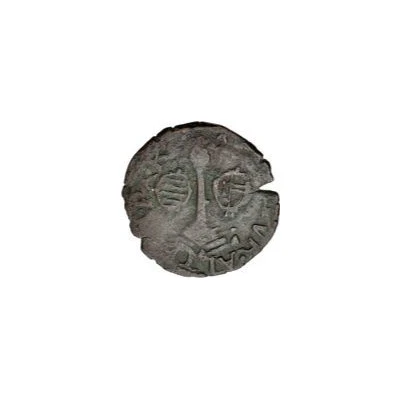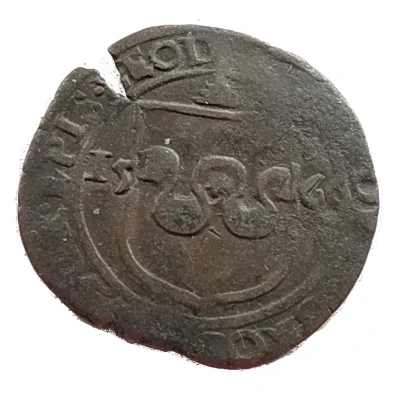
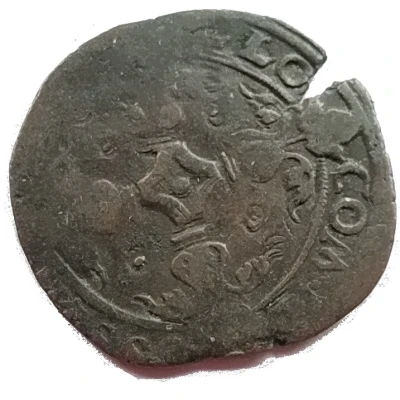

Brûlé of 6 sols - Gerard of Groesbeek
| Copper | 2.1 g | 24.88 mm |
| Issuer | Prince-bishopric of Liege (Belgian States) |
|---|---|
| Prince-bishop | Gerard of Groesbeek (1564-1580) |
| Type | Standard circulation coin |
| Years | 1561-1567 |
| Value | Brûlé = 6 Sols (1⁄320) |
| Currency | Florin Brabant-Liege (1545-1650) |
| Composition | Copper |
| Weight | 2.1 g |
| Diameter | 24.88 mm |
| Thickness | 0.91 mm |
| Shape | Round (irregular) |
| Orientation | Variable alignment ↺ |
| Demonetized | Yes |
| Updated | 2024-10-04 |
| Numista | N#264519 |
|---|---|
| Rarity index | 87% |
Reverse
Floriate cross with large dot at center and in each corner.
Script: Latin
Lettering: DVX · BVLLO · COM · LOSSEN
Unabridged legend: Dux Bullonensis Comes Loosensis
Translation: Duke of Bouillon, Count of Loon
Edge
Plain
Comment
This coin is a quart de patard liégeois or a quart d'aidant. It was hammer-struck in the Liège factory by Balthus de Bomershoven. It is dated from 1565 to 1567. It is also dated 1516, but this is an engraving error.Interesting fact
One interesting fact about the Standard circulation coin Brûlé of 6 sols - Gerard of Groesbeek 1561-1567 from Prince-bishopric of Liege (Belgian States) made of Copper weighing 2.1 g is that it was minted during a time of great religious and political turmoil in the region. The Prince-bishopric of Liege was a small state in what is now Belgium, and it was ruled by a prince-bishop who was both the spiritual and secular leader of the region. The coin was minted during the reign of Gerard of Groesbeek, who was the prince-bishop from 1561 to 1567. This was a time of great upheaval in Europe, with the Protestant Reformation and the Dutch Revolt taking place, and the coin may have been used to help finance the military and political efforts of the prince-bishopric. Despite its historical significance, the coin is relatively rare and valuable, with only a few examples known to exist today.
